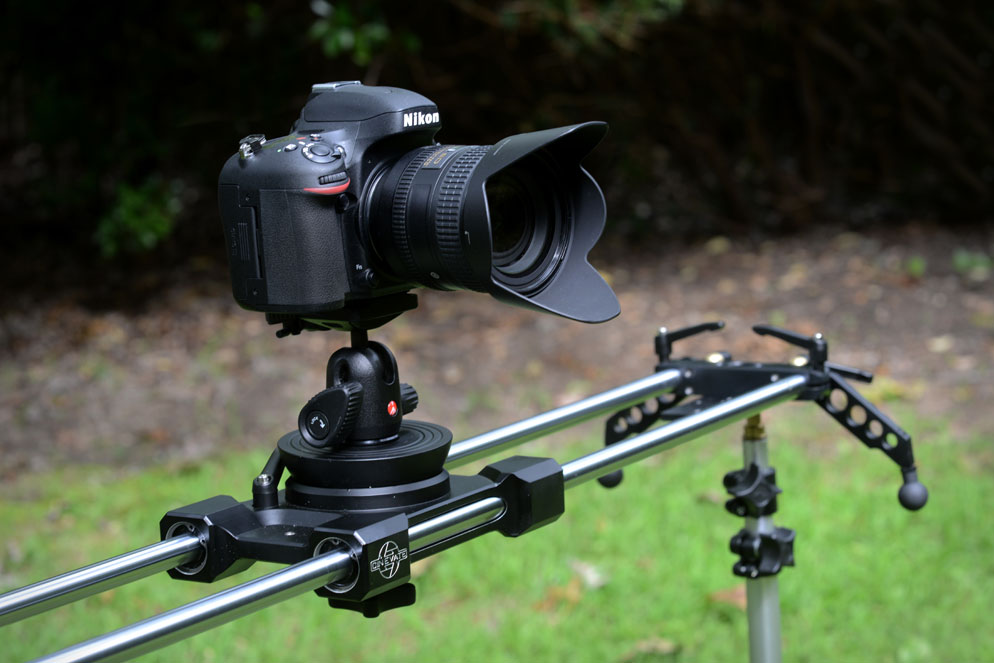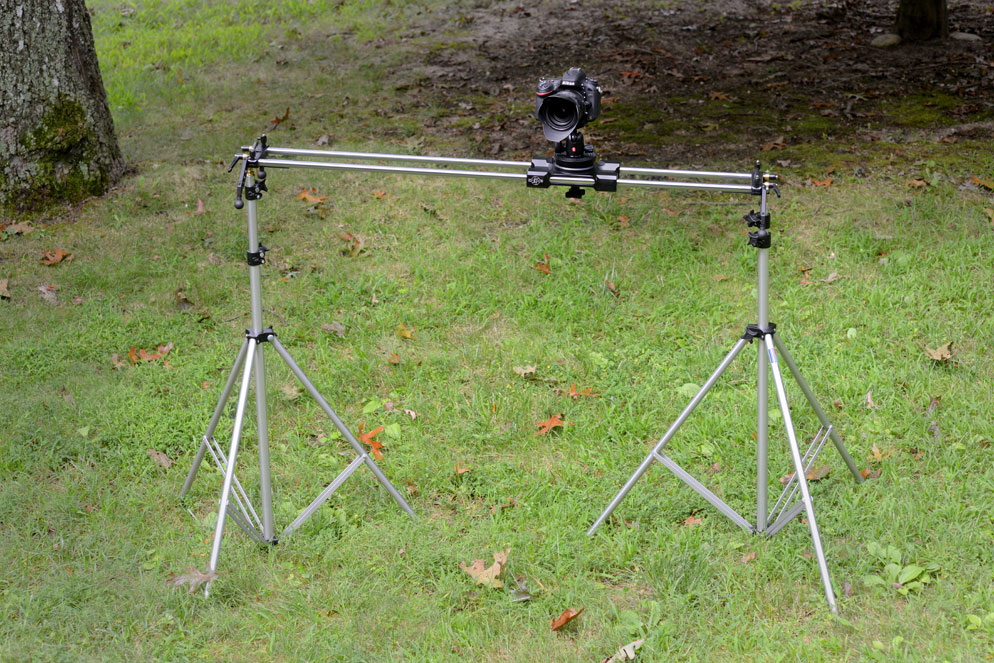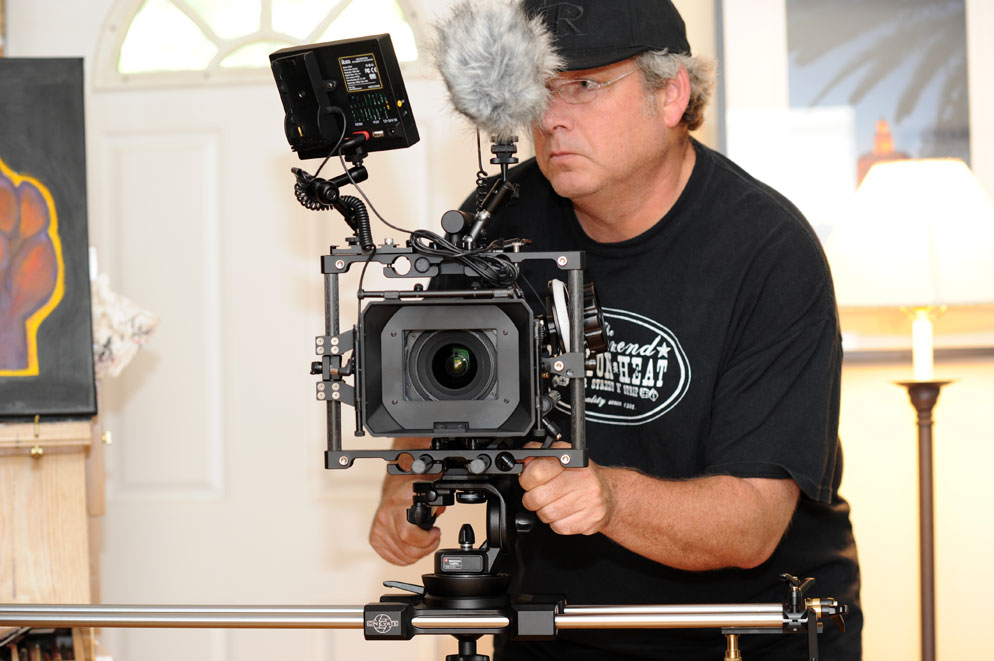Moving Pictures: Riding the Rails Video Techniques
For Smooth Moves, Add the Essential Accessory
Someone asked me recently, “After your HD-SLR and NIKKOR lenses, what’s on your essential equipment list?” That was an easy one: a slider (the term is shorthand for a device that replicates tracking or dolly shots). It’s the most important accessory you can have. It’s versatile, easy to use and inexpensive, and it will quickly raise the creativity level and production value of anything you film.
My bowl slider with a D600 mounted on it. The ball bearings that make this unit such a smooth operator are housed in the square corner mounts.
I prefer using tripods for slider support, but sometimes I’ll travel with my lightweight kit and its light stands. The unit’s ball bearings are so smooth that I can set the supports at different heights and let the camera slide along on its own. Some sliders offer a hand crank for smooth movement.
A slider will allow you to smoothly follow action or accomplish a reveal, in which the camera starts its move behind an object and slides to reveal the scene. If you watched the Olympics, you saw the results of highly specialized, motorized and computerized sliders smoothly keeping pace with runners and swimmers.
Fixed and Extendable Sliders
Two of the most popular types of sliders are the fixed slider, with its carriage on a fixed length of rail, and an extendable slider, which is fitted with wheels that are adaptable to common PVC pipe that you can assemble to the length you want.
There are many suppliers of sliders; the ones I use are made by Cinevate. One is a simple rail and carriage device about three feet long; the other is four feet long, and its stainless steel rods can be attached to tripods or light stands. The unit’s ball bearings make for really smooth movement, and this slider also features a bowl-type mounting system that allows me to level my camera independently of the slider and make shots in which the camera is level to the horizon but the slider itself can be tilted for effect. I often use a ball head on top of this system for increased movement.
Adding Dimension to Your Movies
In addition to smooth, steady tracking shots and reveals, I use a slider to show dimension in my movies. If I want to show, for example, a forest scene and there’s nothing else going on, there won’t be much depth in the scene until movement shows the relationship of objects near and far as they change their relative positions based on where the camera is going. The camera, in effect, adds depth as it moves as you’d move your head, your eyes or your body. The slider approximates the feeling of being there as it reveals spatial relationships and shows what you’d see at different depths as you move along.
Finally, the slider seems to suggest ideas for shots. It prompts experimentation, and for that reason alone, I’d suggest it for the top of your essential gear list.
Riding the Rails - Using sliders and rails to enhance your DSLR video.










